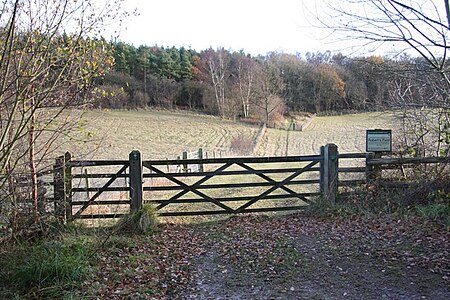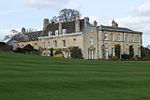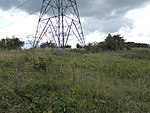Lincolnshire Gate

Lincolnshire Gate is the name given to a corner in the road between Holywell, Lincolnshire and Pickworth, Rutland to the south-west of Castle Bytham, in Lincolnshire, England. It is situated approximately 5 miles (8 km) north from Stamford. It describes a point where this small country road crosses the county border between Lincolnshire and Rutland, to pass between Newell Wood and Howitts Gorse. On either side are the remains of small quarries, worked from the Middle Ages till the early 20th century for building and road stone for nearby use. Robert's Field, a 10 acres (0.04 km2) calcareous grassland nature reserve and Site of Special Scientific Interest (SSSI), is 250 yards (229 m) to the north.There are no human settlements at Lincolnshire Gate.
Excerpt from the Wikipedia article Lincolnshire Gate (License: CC BY-SA 3.0, Authors, Images).Lincolnshire Gate
Pickworth Road, South Kesteven
Geographical coordinates (GPS) Address Nearby Places Show on map
Geographical coordinates (GPS)
| Latitude | Longitude |
|---|---|
| N 52.7207 ° | E -0.52134 ° |
Address
Pickworth Road
Pickworth Road
PE9 4DH South Kesteven
England, United Kingdom
Open on Google Maps










